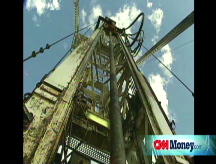Selling green houses (and cars and fuel)
More and more entrepreneurs are tapping into what could be the biggest economic opportunity of the 21st century: clean, money-saving technology.
(Fortune Small Business) -- Everybody talks about global warming and high gasoline prices, but who, really, is doing anything about it? Entrepreneurs, that's who. In my upcoming book, The Plot to Save the Planet, I chronicle the small-business owners who are creating the green houses, cars, and energy sources that will slash our fuel bills and help clean up our ecosystem. For the first time, big money is available to back their efforts. In 2007, venture capitalists invested $5.2 billion in green tech, up 44% from the previous year. Meet mavericks who are working on creative (and potentially lucrative) solutions to our energy challenges.
LivingHomes: A Low-Energy Lifestyle
Highland Street runs through the hills of Santa Monica just a few blocks above the Pacific Ocean. Nestled among its rows of 1920s and '30s bungalows, with their broad front porches and quaint dormers, is a very unusual house, one that architects might describe as California modern.
Built by Steve Glenn, who founded a local construction firm named LivingHomes, and designed by the iconic Southern California architect Ray Kappe, this structure stands as one of the greenest private residences in the country. The 2,480-square-foot home is 80% more energy efficient than a conventional structure of similar size. It is the first house to receive a platinum LEED rating, the highest environmental standard set by the nonprofit U.S. Green Building Council.
Glenn, who lives in the house, now has 17 more under construction that are based on his green design. Most of the elements in the Highland house derive from recycled materials or are manufactured using sustainable manufacturing processes. It took only one day for a crew with a large crane to assemble the skeleton of this home, a prefab built at a factory in Sante Fe Springs, Calif. That means the house was produced with 75% less construction waste than traditional home construction. Also, workers drove fewer trips to the site in polluting trucks.
Working to take advantage of Santa Monica's sunny climate, Glenn ensured that most of the home's heating, electricity, and air conditioning would be produced by onsite solar cells known as photovoltaics. Point these silicon panels at the sun, and out comes electricity. Other energy-saving features include solar water heating and radiant-heat floors; a native landscape and a rooftop garden to divert storm water and provide insulation; efficient appliances made by Bosch; and LED lights that use a fraction of the power of incandescent bulbs. An indoor garden filters air pollutants and is a prolific generator of oxygen, and a gray-water recycling system diverts sink and shower water for irrigation. Glenn's monthly power bill is $10, compared with about $100 for a conventional house - a 90% savings.
The house cost $390 a square foot, or about $900,000 - some 25% less than typical high-end construction in that neighborhood. Glenn believes he can bring those costs down by a third in future projects.
"My prediction is that within 15 years green building will go away as a category," he says. "It will just be the way things are built."
-
The Cheesecake Factory created smaller portions to survive the downturn. Play
-
A breeder of award-winning marijuana seeds is following the money and heading to the U.S. More
-
Most small businesses die within five years, but Amish businesses have a survival rate north of 90%. More
-
The 10 most popular franchise brands over the past decade -- and their failure rates. More
-
These firms are the last left in America making iconic products now in their twilight. More













